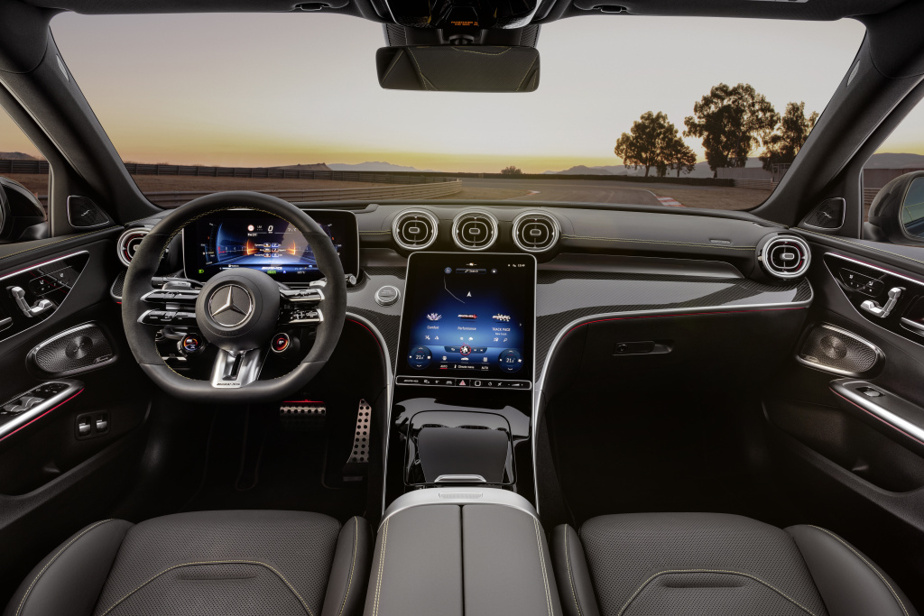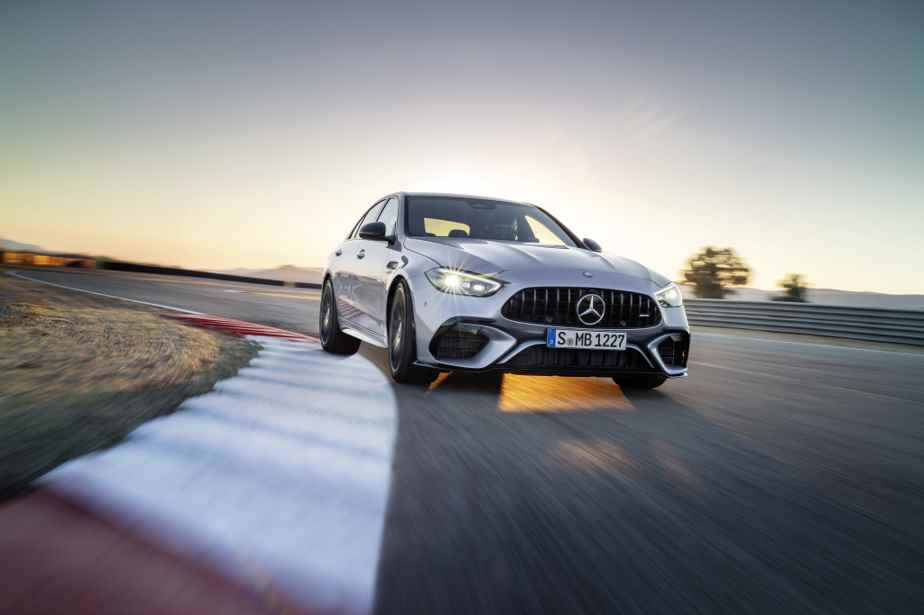In a sign that electrification is taking its course even under the hoods of some sporting icons, Mercedes-Benz has decided to jettison the twin-turbo V8 that powered its C 63 sedan until recently for a plug-in hybrid powertrain.
Posted at 6:45 p.m.
This change of direction, caused by increasingly strict regulations in terms of emissions, is accompanied by an appreciable gain in horsepower.
The illustrious compact sedan that targets the BMW M3 thus loses four cylinders in the transition. Its internal combustion engine will now be a 2.0L turbocharged four-cylinder with an impressive maximum power of 469 hp. This makes it the most powerful production four-cylinder ever assembled.
This four-cylinder is only part of the equation, however. A second motor, this one electric, is bolted to the rear axle. It can produce 201 hp on its own, bringing the count, when the two mechanical organs work in unison, to 671 hp. Thanks to the all-wheel drive, 0-100 km/h takes just 3.4 seconds. Interestingly, this motor can send its torque forward at all times by means of a mechanical connection.
Plug-in hybrid for fitness and weight gain

PHOTO PROVIDED BY MERCEDES-BENZ
Mercedes-AMG C 63 SE Performance 2024
However, do not count on this C 63 to complete long journeys in electric mode. The sedan has a laughable range of just 13 km powered by a small 6.1 kWh battery.

PHOTO PROVIDED BY MERCEDES-BENZ
The interior of the 2024 Mercedes-AMG C 63 SE Performance
All this paraphernalia also saves the C 63 a lot of weight. At 2111 kg, it drags 384 kg more than its predecessor, which was already not a featherweight. To limit the effects, the C 63 receives the contribution of a rear steering and adaptive damping.
A fine technical demonstration at the cost of obvious complexity.

